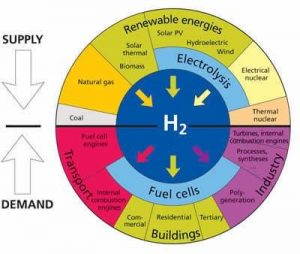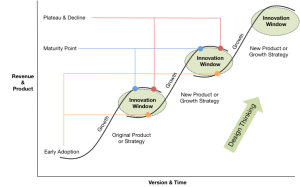Do you remember the BMW Hydrogen 7 from 2005?
No? It’s not your fault, it is still a question even for experts whether it was meant to be a marketing ploy or a real development. For sure the concept burning hydrogen in the combustion engine was a dead end.
We know now that the (fuel cell + electric motor) is the winning match in the hydrogen world.
However, the killer application hasn’t surfaced yet. But now?
WHY HYDROGEN?
“Hydrogen is the most abundant element in the universe – and one of the most useful. Practically anything that uses energy can be powered by it. It has the potential to play an important part in the transition to a low-carbon world.”
Matthew Tipper
Vice-president for new fuels, Shell
If he says so, it may mean a lot.
He works for Shell, have you noticed?
Hydrogen is the simplest element on earth—it consists of only one proton and one electron.
Hydrogen has a number of positive characteristics.
Some of them are:
- Hydrogen is the most abundant element in the universe.
- When it is burned no harmful emissions are produced – only water vapour and heat.
- Hydrogen is not an energy source, it is an efficient energy vector, storing and transporting energy. (Natural energy can be converted into other forms of energy that did not exist in usable form in nature. Examples of this are electricity and hydrogen. We call these man-made forms of energy ‘energy vectors’, because they enable energy to be carried and can then be converted back into any other form of energy. An important characteristic of an energy vector is the specific energy: the energy in 1 kilogram of hydrogen gas is about the same as the energy in 2.8 kilograms of gasoline.)
- Hydrogen can also be used to power vehicles and used for power-to-gas application (it can be injected into the gas grid).
Based on the above mentioned charateristics a whole ecosystem was envisioned in the 1970s, the hydrogen economy. The name refers to a vision of using hydrogen as an alternative low carbon energy carrier that can be used as a replacement in transport, heating fuel, and energy storage. The different uses and the methods of production of hydrogen are likely to be highly interconnected, with one service creating a supply for other uses. It is precisely this interconnectedness and interdependency that creates a hydrogen economy.

Almost 50 years have elapsed since the first publication of the concept, hydrogen economy.
Why haven’t we established not even one prospering example of the hydrogen economy?
WHAT IS THE PROBLEM WITH HYDROGEN?
There are some.
- Well, H2 is not just there for you to use. You have to produce H2. And it is not cheap. (Remember, hydrogen is an energy carrier, not an energy source, it doesn’t typically exist by itself in nature and must be produced from compounds that contain it.)
- Hydrogen has an outstanding specific energy value (compared to diesel or methane) but hydrogen has a low (volumetric) energy density, it is stored onboard a vehicle as a compressed gas to achieve the driving range of conventional vehicles. Most current applications use high-pressure tanks capable of storing hydrogen at pressure either 350 – 700 bar. For example, the FCEVs (fuel cell electric vehicles) in production by automotive manufacturers and available at dealerships have 700 bar tanks. Retail dispensers, which are mostly co-located at gasoline stations, can fill these tanks in about 3-5 minutes. Other storage technologies are under development, including bonding hydrogen chemically with a material such as metal hydride, or low-temperature sorbent materials.
- Hydrogen refueling network is underdeveloped to put it mildly.
The problems with hydrogen can be boiled down to 2 factors: cost and availability.
GOOD SIGNS
It is clear enough that there is an increasing demand for clean(er) energy driven transportation.
If the cost decreases significantly, a huge demand in the passenger car segment will be materialize.
If the huge demand appears, the infrastructure developments will be triggered immediatelly and a boom will arrive.
Now, how can be the cost pushed down? Everybody knows the answer: with ever-growing volume in the production.
Good. There are different drives here which can stimulate the growth of volume.
- Some of the heavy weight early innovators start the process, as in the case of BEVs (battery electric vehicles). Just to remember, it was not the BMW nor TESLA that moved the ball. It was mainly Toyota with the Toyota Prius hybrid technology in 1997.
- A new (state) policy totally changes the market situation.
Just a couple of words to Point 1.
Visit the Toyota’s website and get to know the Toyota Mirai — billed as the world’s first mass-produced hydrogen fuel cell vehicle. Remember, not many believed in Toyota hybrid back in 1997 but Toyota knows something and has proved the concept. That’s why it has a significance when Toyota is starting a new curve in the product portfolio development graph… while the BEV curve is still in the first stretch of the increasing phase.

Of course, it is good when the early innovator is a heavyweight champion (like Toyota beeing one of the biggest players in the arena), because the manufacturer runs the risk entirely.
Do not underrate however the significance of Point 2 because in this case the business risk is much lower and this enables more market players to jump at the new business.
A good example is the step the U.K government has taken recently.
Around one-third of all trains in U.K. are diesel units. They are required to be overhauled or replaced to fulfil the government plan to remove all diesel rail vehicles by 2040.
At the same time Transport Secretary Chris Grayling has recently cancelled a host of railway line electrification schemes owing to cost overruns and claims that technological advances – such as hydrogen-powered trains – would negate the need for electrified lines in the coming years.
Another example is Germany, where the northern German state of Schleswig-Holstein announced plans to electrify its entire rail network by 2025, making use of fuel cell technology to power the trains. The region is a net exporter of electricity, with a relatively large supply of wind, so it has excess capacity that could be used to power electrolysers to split water, highlighting how hydrogen can be a vector for an integrated energy system. The arguments for using hydrogen to power mass transit systems are also perhaps more apparent than for personal travel. Well-defined routes with fixed terminuses mean that range anxiety is not an issue and the number of refuelling stations can be reasonably small.

This market is huge, in most countries the regional train network is only partially electrified, even in Germany almost 50% of the regional train traffic uses diesel-only engines because the routes are non electrified.
We are still far from a time when hydrogen runs through our pipes on a large scale, heating our homes and powering our cars, but as explained in Point 1 and Point 2 huge drives are moving in the background to accelerate the business development in the hydrogen world and that makes me happy.
Are you happy too?

This is one of the clearest H2 insights I’ve run across. It almost gets to the essence: that hydrogen adds the utilities of time and place to the power grid.
Thanks, Stan, I appreciate your opinion.